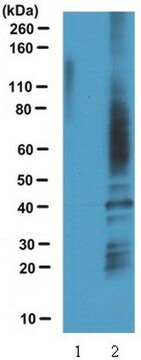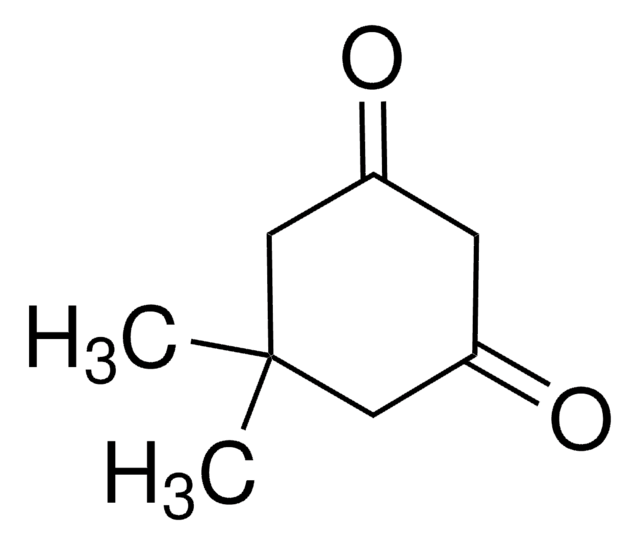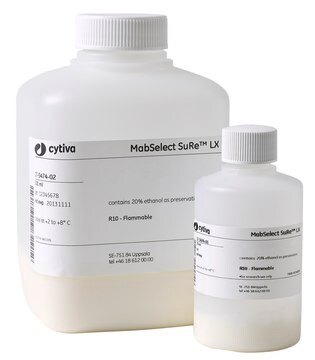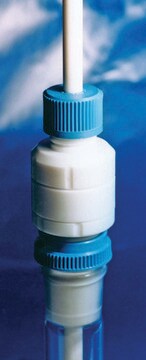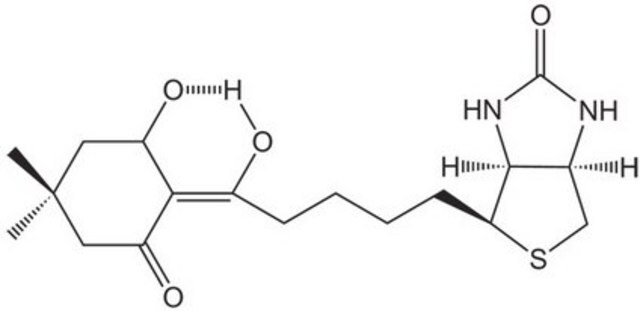07-2139
Anti-Cysteine Sulfenic Acid Antibody
serum, from rabbit
Iniciar sesiónpara Ver la Fijación de precios por contrato y de la organización
About This Item
Código UNSPSC:
12352203
eCl@ss:
32160702
Productos recomendados
origen biológico
rabbit
forma del anticuerpo
serum
tipo de anticuerpo
primary antibodies
clon
polyclonal
reactividad de especies
mouse, rat, human
reactividad de especies (predicha por homología)
mammals
técnicas
western blot: suitable
Condiciones de envío
wet ice
modificación del objetivo postraduccional
unmodified
Descripción general
Protein sulfenic acid formation is a reversible post-translational modification that may be used to monitor protein oxidation on reactive cysteines within target proteins. This can be detected with protein sulfenic acid derivatised with dimedone.
Especificidad
This antibody recognizes proteins containing cysteine sulfenic acid derivitized with dimedone.
Inmunógeno
Epitope: Other
KLH-conjugated corresponding to cysteine sulfenic acid.
Aplicación
Anti-Cysteine Sulfenic Acid detects levels of Cysteine Sulfenic Acid proteins & has been published & validated for use in WB.
Research Category
Apoptosis & Cancer
Apoptosis & Cancer
Research Sub Category
General Post-translation Modification
General Post-translation Modification
Western Blot Analysis: A previous lot of this antibody detected cysteine sulfenic acid in NIH/3T3 and HEK293 cell lysates.
Calidad
Evaluated by Western Blot in rat ventricular myocyte lysate.
Western Blot Analysis: 1:10,000 dilution of this antibody detected cysteine sulfenic acid on 10 µg of rat ventricular myocyte lysate.
Western Blot Analysis: 1:10,000 dilution of this antibody detected cysteine sulfenic acid on 10 µg of rat ventricular myocyte lysate.
Descripción de destino
Multiple kDa are observed that increases with oxidized stress (H2O2).
Forma física
Unpurified
Unpurified rabbit polyclonal with 0.05% sodium azide.
Almacenamiento y estabilidad
Stable for 1 year at from date of receipt.
Handling Recommendations: Upon receipt and prior to removing the cap, centrifuge the vial and gently mix the solution. Aliquot into microcentrifuge tubes and store at -20°C. Avoid repeated freeze/thaw cycles, which may damage IgG and affect product performance.
Handling Recommendations: Upon receipt and prior to removing the cap, centrifuge the vial and gently mix the solution. Aliquot into microcentrifuge tubes and store at -20°C. Avoid repeated freeze/thaw cycles, which may damage IgG and affect product performance.
Nota de análisis
Control
Rat ventricular myocyte lysate
Rat ventricular myocyte lysate
Cláusula de descargo de responsabilidad
Unless otherwise stated in our catalog or other company documentation accompanying the product(s), our products are intended for research use only and are not to be used for any other purpose, which includes but is not limited to, unauthorized commercial uses, in vitro diagnostic uses, ex vivo or in vivo therapeutic uses or any type of consumption or application to humans or animals.
¿No encuentra el producto adecuado?
Pruebe nuestro Herramienta de selección de productos.
Código de clase de almacenamiento
10 - Combustible liquids
Clase de riesgo para el agua (WGK)
WGK 1
Certificados de análisis (COA)
Busque Certificados de análisis (COA) introduciendo el número de lote del producto. Los números de lote se encuentran en la etiqueta del producto después de las palabras «Lot» o «Batch»
¿Ya tiene este producto?
Encuentre la documentación para los productos que ha comprado recientemente en la Biblioteca de documentos.
Hayato Irokawa et al.
The Biochemical journal, 478(7), 1453-1470 (2021-03-23)
Redox regulation of proteins via cysteine residue oxidation is involved in the control of various cellular signal pathways. Pyruvate kinase M2 (PKM2), a rate-limiting enzyme in glycolysis, is critical for the metabolic shift from glycolysis to the pentose phosphate pathway
Claire Maller et al.
Antioxidants & redox signaling, 14(1), 49-60 (2010-06-04)
Protein sulfenic acids (SOHs) are the principal oxidation products formed when redox active proteins interact with peroxide molecules. We have developed a new antibody reagent that detects protein SOHs derivatized with dimedone. Using this new antibody, we found that glyceraldehyde
Nuestro equipo de científicos tiene experiencia en todas las áreas de investigación: Ciencias de la vida, Ciencia de los materiales, Síntesis química, Cromatografía, Analítica y muchas otras.
Póngase en contacto con el Servicio técnico